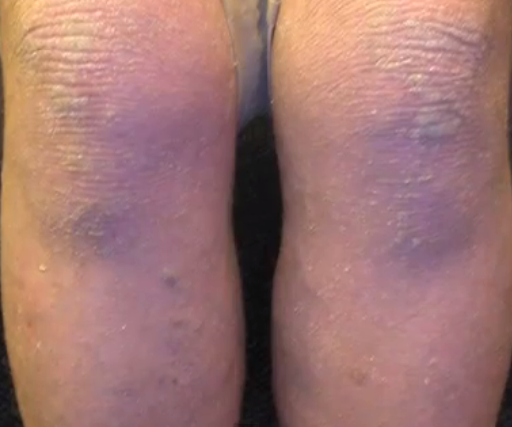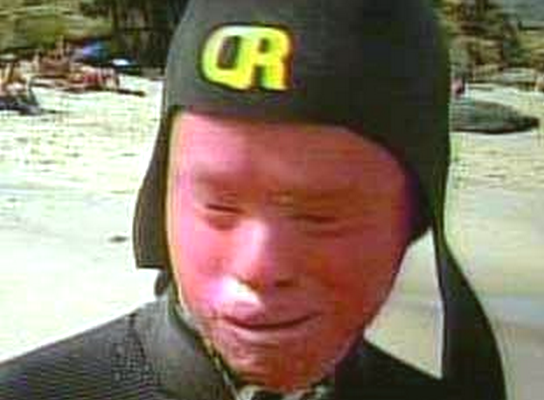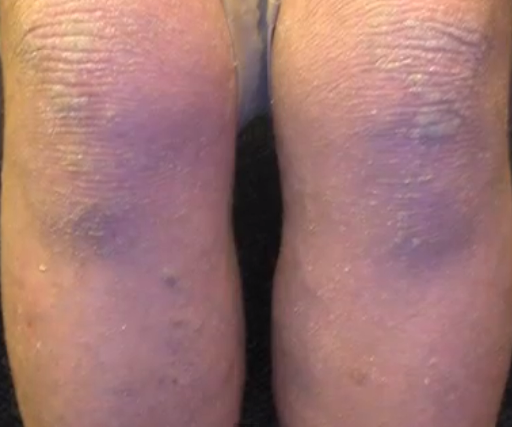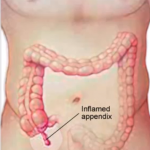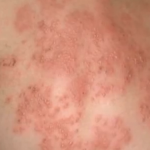Harlequin ichthyosis is a skin condition, which is caused by a genetic disorder. This disorder causes the skin of an infant to be hard, thick with scaly plates that are separated by deep cracks. The skin forms diamond shaped plates with fissures dividing the plates. Areas affected by the condition include the mouth, ears, nose, and eyelids. An infant with this condition has limited movement of arms and legs. There is also restricted movement of chest, which results to difficulties in breathing and respiratory failure.
The skin forms a barrier that protects the body from effects of surrounding environment like heat, microbes, and chemical substances. Harlequin ichthyosis disrupts the skin barrier making it difficult for babies with the condition to control loss of water, fight infection, or regulate body temperatures. Infants with this condition experience increased loss of body fluids or dehydration. In the first few weeks, the infants develop life-threatening infections but with the improved medication, people with the condition can survive to reach adolescence.
What causes harlequin ichthyosis?
Harlequin ichthyosis disorder is associated with mutation of gene ABCA12. This is the gene, which provides instructions for the production of the protein that helps in normal development of skin. This protein helps in transportation of lipids or fats to epidermis, or the outermost layer of skin. When there is certain mutation of gene ABCA12, this prevents the cells from making ABCA12 protein.
At other times, the mutations of the gene may only prevent the production of sufficient protein meaning that there is impaired or less development of epidermis something that results to thickened hard scales on the skin. For a person to suffer from this condition, he or she has to inherit the mutated genes. The inherited genes occur in autosomal recessive pattern whereby both copies of the genes from each cells are mutated. Each parent may carry one copy of the gene that is mutated. Since only one copy of the gene is mutated, the parents do not show signs of the condition.
Symptoms of harlequin ichthyosis
This condition causes severe facial and cranial deformities. A baby with this condition has ears that are poorly developed or the ears and nose may be absent entirely. The eyelids are everted something that leaves the eyes and surrounding tissue susceptible to infection. The eyelids bleed after birth of a baby. Because of the dry skin, the lips are pulled out and are attached to the wide grimace.
The deformities on arms, feet, and fingers make them unable to bend properly and they are small in size. There is hypoplasia in fingers, which means that the baby cannot grab objects properly. Some infants tend to develop unusual number of fingers and toes, a condition known as polydactyly. The armor like fissured skin makes the baby extremely susceptible to temperature changes since there is impaired heat loss.
The restriction in skin movement causes respiratory problems. The chest walls are not able to expand and draw sufficient air something that can lead to hypoventilation and respiratory complications. The skin is also not able to retain water thus causing dehydration.
Diagnosis of harlequin ichthyosis
Harlequin ichthyosis is diagnosed through physical examination and laboratory tests. The abnormalities of the skin are examined to determine if the condition is related with harlequin ichthyosis. If physical examination does not produce good results, genetic testing may be performed to help rule out other conditions. The test reveals the presence of mutated gene ABCA12. A biopsy of skin may be carried out to determine the histologic features of the cells. The histologic results can reveal hyperkeratotic skin cells, which lead to thick and hardened skin.
Harlequin ichthyosis treatment
Although there is no specific cure for this condition, the advancements in medical care for patients suffering from harlequin ichthyosis has seen improvement in the symptoms. In the past, it was difficult to treat the condition and it was regarded as fatal but this has changed today. With improved neonatal care, the number of patients surviving with this condition has increased.
Treatment is aimed at relieving the symptoms such as hydration, difficulties in breathing, and infections from the open skin. In the past, most deaths occurred due to systemic infection. Use of retinoids such as isotrex helps relieve the symptoms. To help a patient overcome the breathing and respiratory complications after delivery, babies may require intravenous access. Usually peripheral access is difficult. The baby may need umbilical cannulation.
Infants are placed in humidified incubators and their temperatures are monitored. The heart rate, respiratory rate, and oxygen saturation are also monitored. Application of ophthalmic lubricants helps in relieving symptoms of keratitis, which result from eyelids ectropion. The infants are bathed twice per day with use of wet sodium chloride compresses and bland lubricants applied to soften the hardened scaly skin. To avoid infections, a sterile environment needs to be maintained.
Harlequin Ichthyosis surivors
Nusrit Nelly Shaheen is the oldest known Harlequin Ichthyosis survior. The 29 year old lives in UK and is one of the nine children in the family. Four children died due to this condition but Nelly survived and is now an inspiration for many, leads a fit lifestyle and is learning leadership and coaching. Ryan Gonzalez, 27 year old, is the oldest known Harlequin Ichthyosis survivor in the US. The show Medical Incredible did a profile on him. Another person from America, Hunter Steintz born in 1994 is one of the 12 Americans who have survived this condition.
Harlequin Ichthyosis Pictures
